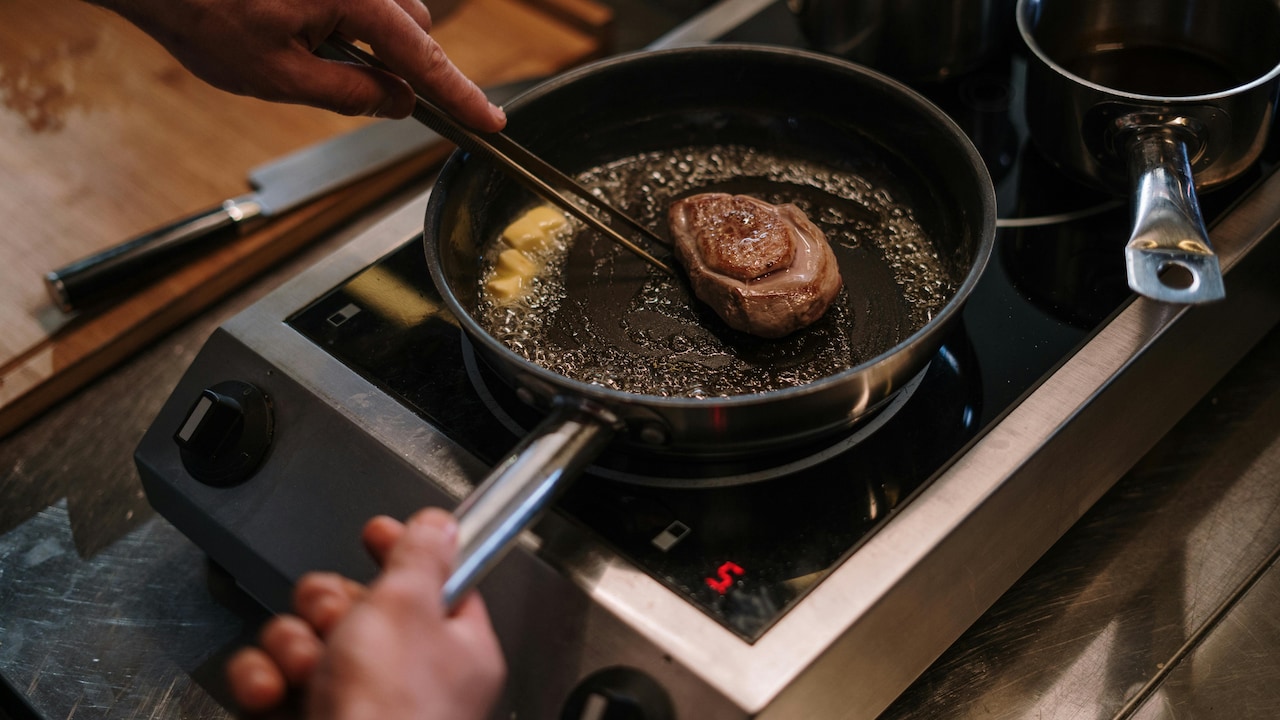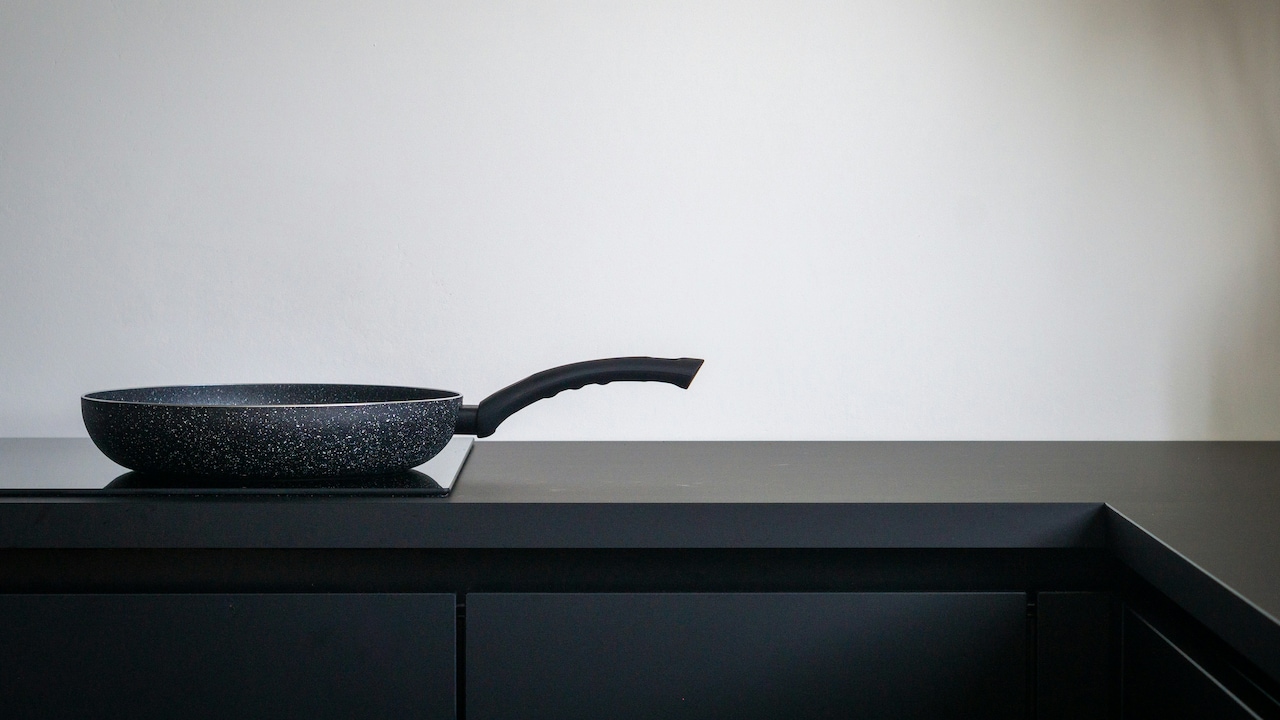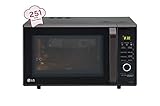How To Choose Pots And Pans That Work On Induction Cookers: Cookware Guide
Induction cooking has become a favourite in many homes for its speed, efficiency and sleek appeal. Yet choosing the right cookware often turns into a guessing game. This guide reveals everything you need to know about buying induction cookware.

Cookware Guide: Know Which Pots And Pans Work on Induction Cookers.
Induction stoves changed the rhythm of home kitchens with their quick heating and neat look. Many households brought them in with hopes of saving time and energy, only to realise that half the old utensils stopped responding. Some pans stayed cold as stone, while others made a loud humming noise that raised eyebrows around the dining table.
Choosing cookware that works well on induction shouldn't feel like a puzzle. A little understanding of how induction technology functions can take away the confusion. Once the basics become clear, upgrading or mixing cookware becomes simple, budget-friendly and even enjoyable. Here is all about how to choose pots and pans that work on induction cookers. This cookware guide walks you through everything worth knowing, using relatable experiences, short explanations and practical tips that suit everyday cooking styles.

Here is how to choose induction-compatible cookware. Photo Credit: Pexels
How To Choose Induction-Compatible Cookware
1. How Induction Stoves Actually Work
Induction stoves use magnetic energy instead of direct heat. A coil beneath the glass surface creates a magnetic field when switched on. The moment a compatible pot or pan sits on the stove, that field interacts with the metal and produces heat inside the cookware itself.
This clever process heats food faster than traditional gas or electric stoves. There's no open flame, no glowing coil and no wasted heat around the vessel. Many people notice the difference while boiling milk or heating dal, the pot warms almost instantly, saving precious minutes during a busy morning.
The catch is that this magic only works when the cookware contains ferromagnetic material. Aluminium or copper vessels without a steel base stay cold, leaving anyone new to induction cooking quite confused. A quick magnet test always clears the doubt. If a magnet sticks firmly to the bottom, the pot will work well. If it slides off or doesn't grip at all, the stove won't recognise it.
2. Why Magnetic Metals Matter
Induction cooking depends on the dance between two metals: the coil inside the stove and the magnetic material in the cookware. When both align correctly, the heating becomes sharp, even and controlled. Cookware made with iron or magnetic-grade stainless steel responds beautifully because it allows the magnetic field to flow through it.
This interaction isn't just about compatibility. It also affects how evenly the heat spreads across the surface. Ferromagnetic metals heat consistently, which helps sauces simmer smoothly and rotis puff evenly in flat pans. A well-designed magnetic base also prevents hot spots that cause food to burn in unpredictable patches.
For many households shifting from gas to induction, the learning curve becomes easier once the metal science becomes familiar. Cookware shops now highlight “induction-friendly” labels, and many brands emboss a coil symbol underneath pans for clarity. However, a physical magnet test remains the quickest way to judge. Understanding this little trick saves both time and money by preventing accidental purchases.
3. Stainless Steel Cookware: Reliable and Stylish
Stainless steel cookware sits high on most kitchen wishlists because it balances durability with elegance. It resists rust, doesn't react with food and offers a polished look that suits both daily cooking and festive preparations. When it comes to induction stoves, stainless steel earns a solid reputation, provided it contains magnetic properties.
Not all stainless steel works. Some grades contain nickel or chromium in combinations that reduce magnetism, making them unsuitable. Cookware brands often solve this by adding a sandwich base, an aluminium core covered by magnetic stainless steel. This design brings faster heating while keeping the utensil induction-ready.
Many households appreciate stainless steel for handling strong masalas, heavy curries and long simmering times without warping or flavour transfer. It's also easy to clean and withstands frequent scrubbing, which becomes handy after preparing sticky gravies. The only thing to watch for is thickness. Thin steel pans may rattle or make a humming sound, so a heavier base ensures quieter and more stable cooking.
4. Cast Iron: Traditional Strength Meets Modern Cooking
Cast iron has made its way back into kitchens with a sense of nostalgia. Its weight, strength and natural flavour-enhancing qualities make it perfect for dosas, uttapams, roasted vegetables and slow-cooked curries. The good news is that cast iron works brilliantly on induction stoves because it carries strong magnetic properties.
A cast-iron tawa heats evenly and holds high temperatures, making it ideal for crisp textures. Once seasoned, it develops a natural non-stick surface without chemicals. Many families pass down cast iron vessels across generations, and induction technology only adds convenience to this tradition.
The only caution lies in handling. Cast iron heats intensely, so moderate flame settings on induction are enough for most dishes. Sudden temperature changes, such as washing a hot pan under cold water, may cause cracks. With simple care, like drying properly and applying a thin layer of oil, the cookware lasts decades. Its timeless charm blends beautifully with modern induction cooking.
5. Hard-Anodised Aluminium: Durable but Needs a Magnetic Base
Hard-anodised aluminium appeals to cooks who prefer lightweight yet strong cookware. Its dark finish looks stylish, and the anodising process makes it resistant to scratches and long-term wear. This material heats rapidly and suits everyday busy schedules.
However, aluminium alone doesn't respond to induction technology. To make it compatible, manufacturers add a magnetic stainless-steel plate at the bottom. This additional layer allows the induction stove to recognise the pan and transfer heat effectively. Not every hard-anodised utensil includes this feature, so checking the label becomes important.
Cookware with a proper magnetic base performs well for most dishes, from stir-fried vegetables to quick evening noodles. It tends to heat faster than steel, so adjusting the temperature becomes necessary to avoid burning. Many households enjoy the balance it brings: lighter than cast iron, sturdier than plain aluminium, and efficient enough for induction kitchens.
6. Non-Stick Cookware: Convenience with Compatibility Checks
Non-stick pans remain popular for their low-oil cooking and easy cleaning. They help prepare delicate dishes like omelettes, cheelas and pancakes without sticking to the surface. For induction stoves, these pans must include a magnetic base, usually made of steel, fused beneath the aluminium body.
Many modern brands highlight induction compatibility right on the packaging. Still, not all non-stick pans offer it, especially older ones. A missing magnetic layer means the pan stays cool even when the stove is set to its highest level, so checking beforehand prevents disappointment.
Non-stick coatings can wear out if exposed to high heat. Induction stoves heat quickly, so medium settings often give the best results. A wooden or silicone spatula protects the coating and keeps it smooth for longer. With the right care, induction-friendly non-stick cookware brings comfort and speed to everyday meals.
7. Copper Cookware: Beautiful but Mostly Incompatible
Copper utensils look elegant and conduct heat with remarkable speed, making them a favourite among chefs. They distribute warmth evenly, which helps sauces and sweets cook with precision. Yet copper doesn't respond to induction technology because it lacks the magnetism required for heating.
Some premium brands attach a magnetic stainless-steel base to the copper vessel to make it induction-ready. These hybrid designs perform well, but they often come at a higher price because the manufacturing process involves complex bonding. For many families, such cookware becomes more of a speciality purchase than a daily-use item.
Copper also needs extra care, polishing, drying and avoiding certain acidic foods that cause discolouration. For those who love the visual charm of copper but rely on an induction stove, a magnetic-base version solves the compatibility issue. Otherwise, copper remains better suited for gas stoves, where it shows its full potential without limitations.

Cookware Guide: What Actually Works on Induction Stoves
Photo Credit: Pexels
8. Glass and Ceramic Cookware: Beautiful but Not Heat-Efficient
Glass and ceramic cookware bring a touch of beauty and warmth to the kitchen. Their colours and designs make them attractive for serving and baking. However, for induction cooking, they rarely qualify. These materials lack magnetic properties, so the stove cannot heat them.
Even when paired with metallic bases, they struggle with consistency. Glass heats slowly and unevenly, leading to unpredictable results. This becomes tricky when preparing delicate dishes that need stable temperatures. Ceramic-coated pans, on the other hand, fare better, especially when the base is made of magnetic stainless steel.
For reheating leftovers or baking, glass and ceramic still shine, but on an induction stove, they stay more decorative than functional. Anyone fond of them can choose induction-safe hybrids, though they cost more than standard sets. A little research prevents surprises and keeps the cooking experience smooth.
Also Read: Explore Affordable Touch Panel Induction Cooktops On Flipkart Big Bang Diwali Sale
9. Pressure Cookers: What Works and What Doesn't
Pressure cookers hold a special place in many kitchens. Whether it's dal, rajma or steamed rice, they deliver comforting meals in record time. Most modern cookers come with induction-friendly bases, especially steel or hard-anodised versions.
Older aluminium cookers, however, rarely work on induction unless fitted with a magnetic plate. Aluminium heats quickly on gas but fails to respond to induction stoves. Upgrading to a stainless-steel cooker with a thick, magnetic base ensures faster heating and better stability.
Heavy bases help prevent noise during cooking, as induction stoves sometimes create vibrations. A good-quality cooker sits firmly and heats evenly, reducing cooking time further. This proves helpful during morning rush hours, when every minute saved feels like a blessing. Checking for an induction symbol on the bottom makes selection easy.
10. Budget-Friendly Ways to Pick the Right Cookware
Shifting to induction cooking doesn't require replacing the entire kitchen setup at once. A few smart purchases can keep costs under control and still provide excellent results. A simple magnet becomes the most affordable tool; use it on existing utensils to check compatibility.
Start with essentials such as a frying pan, a saucepan and a pressure cooker. Many brands offer combo packs at reasonable prices, often bundled with festive discounts. Another useful addition is an induction interface disk, a flat steel plate that sits between the stove and incompatible cookware. It's not as efficient as direct induction heating, but it helps reuse older vessels without waste.
Choosing cookware with thick, layered bases ensures better performance and long life. Spending a little extra on these pieces saves money later by avoiding quick replacements. With a thoughtful approach, building an induction-ready kitchen becomes simple and budget-friendly.

Cookware Guide: What Actually Works on Induction Stoves; Photo Credit: Pexels
Products Related To This Article
1. Lifelong Forged Kadhai 24cm Glass Lid
2. Pigeon by Stoverkraft Non-Stick Cookware Set
3. Amazon Basics Granite Finish Non-Stick 5 Pcs Induction Base Cookware Set
4. HomeEssentials 4-Piece Non-Stick Cookware Set
5. Milton Pro Cook Kitchen Jewel Set of 5 Non Stick Cookware
Induction stoves bring efficiency, safety and speed to modern cooking, but the right cookware completes the experience. Understanding how magnetism influences heating makes it easy to choose utensils that work smoothly. Whether it's the strength of cast iron, the reliability of stainless steel or the convenience of non-stick pans, each material brings its own charm to the kitchen.
A few small checks and smart choices help create a balanced collection without overspending. As cooking habits evolve, induction-compatible cookware ensures delicious meals come together quickly, comfortably and with confidence, day after day.
(Disclaimer: This article may include references to or features of products and services made available through affiliate marketing campaigns. NDTV Convergence Limited (“NDTV”) strives to maintain editorial independence while participating in such campaigns. NDTV does not assume responsibility for the performance or claims of any featured products or services.)
























